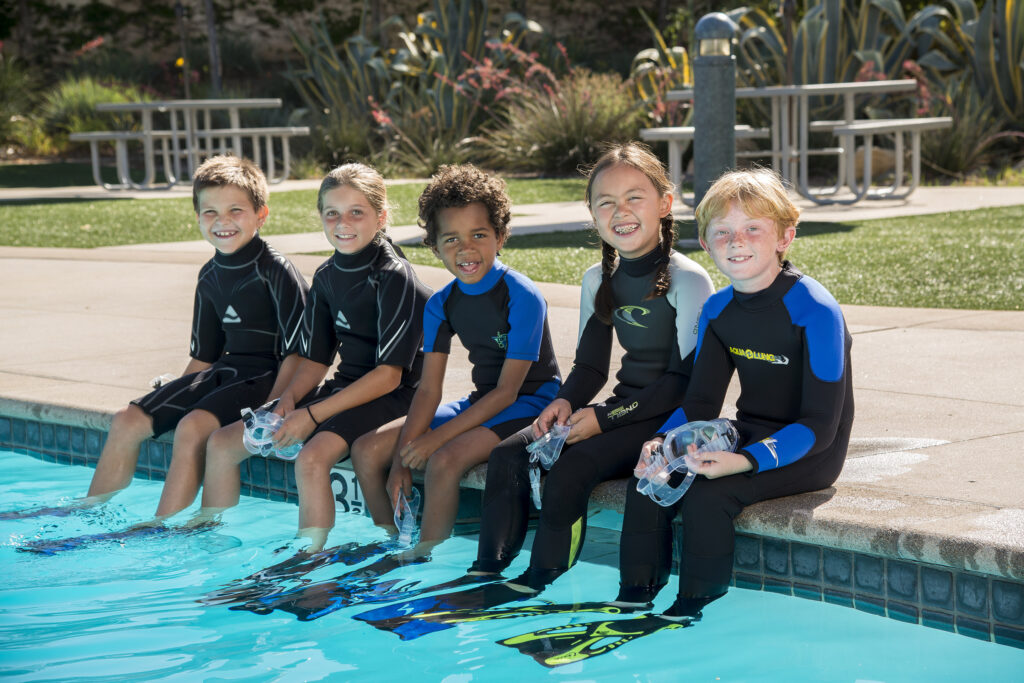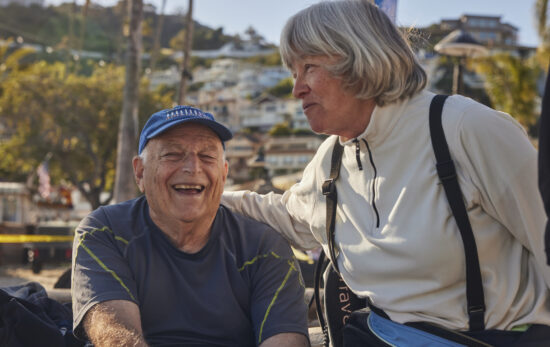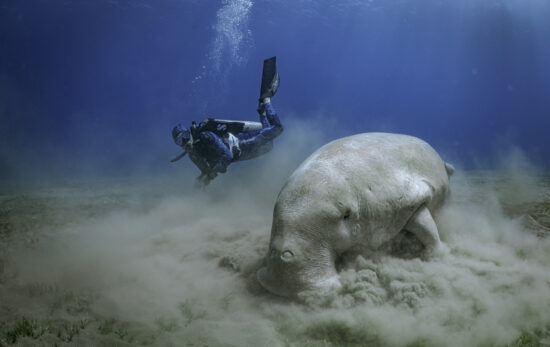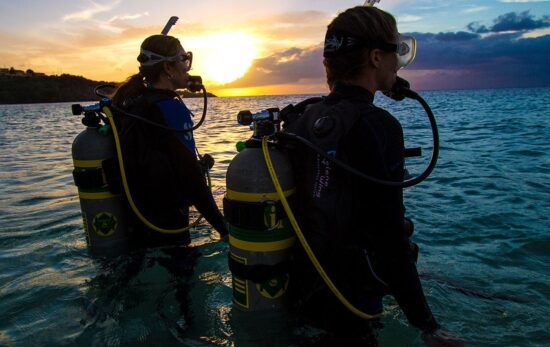Under her parent’s supervision, [Karen] plays with dolphins, takes underwater snapshots and tugs her big sister’s fin tips to tease her. For her, biology and physics are experiences, not dreary school lectures, because she’s seen sharks, frolicked with fish, raced rays and watched whales. She’s noted how light loses color and her air supply goes faster at 10 metres/30 feet than at 5 metres/15 feet. Geography’s no different. Karen’s been diving in the Florida Keys, Bahamas and Grand Cayman, to name only a few of her adventures. On top of this, Karen is an aquanaut, having – more than once – spent 24 hours underwater and slept on the bottom of the sea in a habitat (at only 6 metres/20 feet – but she’s done it).
Despite the pandemic (or maybe partly because of it – see below), there’s a rising interest among young people in scuba, freediving, snorkeling and mermaiding, and this excerpt from Children and Scuba Diving: A Resource Guide for Instructors and Parents shows us why. It paints a vivid picture of how diving and childhood naturally connect, shaping kid and teen curiosity and wonder into discovery and learning through real-world adventures and experiences.

A few months ago, I blogged about families and youth diving, emphasizing that getting youngsters engaged in outdoor activities is good for them in many ways ranging from physical and social benefits and promoting family connections and less risky behavior, to reducing the risk of drowning.
But, children in diving is nothing new. In The Silent World (1953), famed ocean explorer Jacques Cousteau describes teaching his sons Jean-Michel and Phillippe, aged 7 and 5 respectively, to dive. So while children have been part of our sport since the beginning, recently the interest in families and children diving has accelerated. The Outdoor Industry Association’s 2021 Outdoor Participation Trends Report showed that 2020 saw an overall increase over 2019 in outdoor sports participation in the U.S. (including scuba), with a jump to 60% from 46% for households with children.
The Association’s studies attribute much of this bump to “screen time” burnout and pandemic fatigue driving people to crave the outdoors (hardly surprising to divers like us). As seen in certifications, youth diving participation has been trending upward for more than a decade, but has jumped noticeably in 2021. Through August of this year, divers aged 10-19 account for about 16% of certifications, up from 11% in 2020. Looking only at beginner courses (PADI Junior Open Water Diver/Open Water Diver), youngsters account for more than 21% in 2021 versus about 15% in 2020. Prepandemic, the proportional growth (overall and beginner) was 1% to 3% year-over-year.
Addressing the need to know more about kids and diving, in 2002 PADI published Children and Scuba Diving: A Resource Guide for Instructors and Parents. A collaborative work of team of international expert writers and reviewers, it was (and still is) the only work of its kind, and directly addresses the unique developmental, social, instructional and professional interaction questions that arise with kids and diving. Although out of print for quite a few years, the issues and topics covered in Children and Scuba Diving: A Resource Guide for Instructors and Parents are largely timeless and still relevant. Given the recent rising interest in these, Children and Scuba Diving: A Resource Guide for Instructors and Parents is being made available again as a PDF (in English), at no charge.

Beyond this, we’re seeing more attention from writers and media speaking directly to kids about the wonder and importance of the oceans. A great case in point, PADI Divemaster Jill Smith has written, illustrated and published an inspiring young readers book, Sophie & Max Show Some Ocean Love. It’s the story of two children who not only learn to dive and discover the underwater woirld, but use their underwater adventures to act on its behalf. They carefully rescue an entangled fish and learn why removing debris is important. Sophie & Max Show Some Ocean Love promotes becoming a PADI Torchbearer, and I was kindly invited to provide a suitable opening quote. And, word is that the next volume, Sophie & Max Show Some Shark Love, is already in the works.
You can get Sophie & Max Show Some Ocean Love in French and Englishat a wide range of popular booksellers, including Amazon ,McNally Jackson, Target and World of Books. To get your free PDF copy of Children and Scuba Diving: A Resource Guide for Instructors and Parents, just contact your PADI Resort, Dive Center or Instructor about their upcoming classes, trips, PADI AWARE events, kid/family programs etc., and ask them for it. (Even better, beyond a PDF, there’s a small chance they’ll have one of only a few remaining print versions you can buy.) Children and Scuba Diving is a useful reference for divers who are parents and/or teachers, who work or want to work with kids, or really, who were ever kids themselves. Touch base with your PADI professional, and I think you’ll find it’s an informative and interesting read that you’ll get a lot out of.
Seek adventure. Save the ocean.
Drew Richardson





